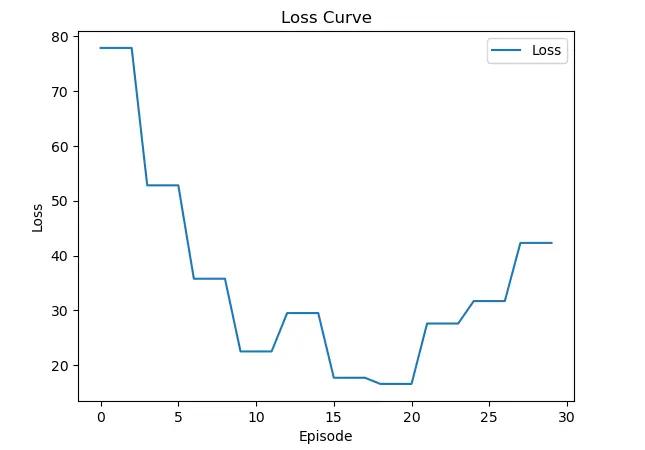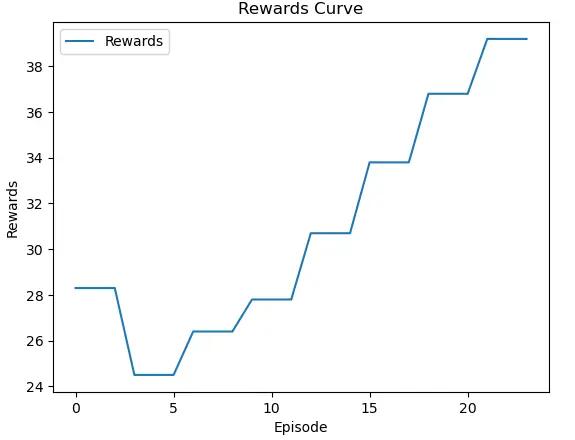
一文教你在MindSpore中实现A2C算法训练
Advantage Actor-Critic (A2C)算法是一个强化学习算法,它结合了策略梯度(Actor)和价值函数(Critic)的方法。A2C算法在许多强化学习任务中表现优越,因为它能够利用价值函数来减少策略梯度的方差,同时直接优化策略。
A2C算法的核心思想
- Actor:根据当前策略选择动作。
- Critic:评估一个状态-动作对的值(通常是使用状态值函数或动作值函数)。
- 优势函数(Advantage Function):用来衡量某个动作相对于平均水平的好坏,通常定义为A(s,a)=Q(s,a)−V(s)。
A2C算法的伪代码
以下是A2C算法的伪代码:
Initialize policy network (actor) π with parameters θ
Initialize value network (critic) V with parameters w
Initialize learning rates α_θ for policy network and α_w for value network
for each episode do
Initialize state s
while state s is not terminal do
# Actor: select action a according to the current policy π(a|s; θ)
a = select_action(s, θ)
# Execute action a in the environment, observe reward r and next state s'
r, s' = environment.step(a)
# Critic: compute the value of the current state V(s; w)
V_s = V(s, w)
# Critic: compute the value of the next state V(s'; w)
V_s_prime = V(s', w)
# Compute the TD error (δ)
δ = r + γ * V_s_prime - V_s
# Critic: update the value network parameters w
w = w + α_w * δ * ∇_w V(s; w)
# Compute the advantage function A(s, a)
A = δ
# Actor: update the policy network parameters θ
θ = θ + α_θ * A * ∇_θ log π(a|s; θ)
# Move to the next state
s = s'
end while
end for解释
- 初始化:初始化策略网络(Actor)和价值网络(Critic)的参数,以及它们的学习率。
- 循环每个Episode:在每个Episode开始时,初始化状态。
- 选择动作:根据当前策略从Actor中选择动作。
- 执行动作:在环境中执行动作,并观察奖励和下一个状态。
- 计算状态值:用Critic评估当前状态和下一个状态的值。
- 计算TD误差:计算时序差分误差(Temporal Difference Error),它是当前奖励加上下一个状态的折扣值与当前状态值的差。
- 更新Critic:根据TD误差更新价值网络的参数。
- 计算优势函数:使用TD误差计算优势函数。
- 更新Actor:根据优势函数更新策略网络的参数。
- 更新状态:移动到下一个状态,重复上述步骤,直到Episode结束。
这个伪代码展示了A2C算法的核心步骤,实际实现中可能会有更多细节,如使用折扣因子γ、多个并行环境等。
代码如下:
import argparse
from mindspore import context
from mindspore import dtype as mstype
from mindspore.communication import init
from mindspore_rl.algorithm.a2c import config
from mindspore_rl.algorithm.a2c.a2c_session import A2CSession
from mindspore_rl.algorithm.a2c.a2c_trainer import A2CTrainer
parser = argparse.ArgumentParser(description="MindSpore Reinforcement A2C")
parser.add_argument("--episode", type=int, default=10000, help="total episode numbers.")
parser.add_argument(
"--device_target",
type=str,
default="CPU",
choices=["CPU", "GPU", "Ascend", "Auto"],
help="Choose a devioptions.device_targece to run the ac example(Default: Auto).",
)
parser.add_argument(
"--precision_mode",
type=str,
default="fp32",
choices=["fp32", "fp16"],
help="Precision mode",
)
parser.add_argument(
"--env_yaml",
type=str,
default="../env_yaml/CartPole-v0.yaml",
help="Choose an environment yaml to update the a2c example(Default: CartPole-v0.yaml).",
)
parser.add_argument(
"--algo_yaml",
type=str,
default=None,
help="Choose an algo yaml to update the a2c example(Default: None).",
)
parser.add_argument(
"--enable_distribute",
type=bool,
default=False,
help="Train in distribute mode (Default: False).",
)
parser.add_argument(
"--worker_num",
type=int,
default=2,
help="Worker num (Default: 2).",
)
options, _ = parser.parse_known_args()首先初始化参数,然后我这里用cpu运行:options.device_targe = “CPU”
episode=options.episode
"""Train a2c"""
if options.device_target != "Auto":
context.set_context(device_target=options.device_target)
if context.get_context("device_target") in ["CPU", "GPU"]:
context.set_context(enable_graph_kernel=True)
context.set_context(mode=context.GRAPH_MODE)
compute_type = (
mstype.float32 if options.precision_mode == "fp32" else mstype.float16
)
config.algorithm_config["policy_and_network"]["params"][
"compute_type"
] = compute_type
if compute_type == mstype.float16 and options.device_target != "Ascend":
raise ValueError("Fp16 mode is supported by Ascend backend.")
is_distribte = options.enable_distribute
if is_distribte:
init()
context.set_context(enable_graph_kernel=False)
config.deploy_config["worker_num"] = options.worker_num
a2c_session = A2CSession(options.env_yaml, options.algo_yaml, is_distribte)设置上下文管理器
import sys
import time
from io import StringIO
class RealTimeCaptureAndDisplayOutput(object):
def __init__(self):
self._original_stdout = sys.stdout
self._original_stderr = sys.stderr
self.captured_output = StringIO()
def write(self, text):
self._original_stdout.write(text) # 实时打印
self.captured_output.write(text) # 保存到缓冲区
def flush(self):
self._original_stdout.flush()
self.captured_output.flush()
def __enter__(self):
sys.stdout = self
sys.stderr = self
return self
def __exit__(self, exc_type, exc_val, exc_tb):
sys.stdout = self._original_stdout
sys.stderr = self._original_stderr
episode=10
# dqn_session.run(class_type=DQNTrainer, episode=episode)
with RealTimeCaptureAndDisplayOutput() as captured_new:
a2c_session.run(class_type=A2CTrainer, episode=episode)
import re
import matplotlib.pyplot as plt
# 原始输出
raw_output = captured_new.captured_output.getvalue()
# 使用正则表达式从输出中提取loss和rewards
loss_pattern = r"loss=(\d+\.\d+)"
reward_pattern = r"running_reward=(\d+\.\d+)"
loss_values = [float(match.group(1)) for match in re.finditer(loss_pattern, raw_output)]
reward_values = [float(match.group(1)) for match in re.finditer(reward_pattern, raw_output)]
# 绘制loss曲线
plt.plot(loss_values, label='Loss')
plt.xlabel('Episode')
plt.ylabel('Loss')
plt.title('Loss Curve')
plt.legend()
plt.show()
# 绘制reward曲线
plt.plot(reward_values, label='Rewards')
plt.xlabel('Episode')
plt.ylabel('Rewards')
plt.title('Rewards Curve')
plt.legend()
plt.show()展示结果:


下面我将详细解释你提供的 MindSpore A2C 算法训练配置参数的含义:
Actor 配置
'actor': {
'number': 1,
'type': mindspore_rl.algorithm.a2c.a2c.A2CActor,
'params': {
'collect_environment': PyFuncWrapper<
(_envs): GymEnvironment<>
>,
'eval_environment': PyFuncWrapper<
(_envs): GymEnvironment<>
>,
'replay_buffer': None,
'a2c_net': ActorCriticNet<
(common): Dense<input_channels=4, output_channels=128, has_bias=True>
(actor): Dense<input_channels=128, output_channels=2, has_bias=True>
(critic): Dense<input_channels=128, output_channels=1, has_bias=True>
(relu): LeakyReLU<>
>},
'policies': [],
'networks': ['a2c_net']
}number: Actor 的实例数量,这里设置为1,表示使用一个 Actor 实例。type: Actor 的类型,这里使用mindspore_rl.algorithm.a2c.a2c.A2CActor。params: Actor 的参数配置。collect_environment和eval_environment: 使用PyFuncWrapper包装的GymEnvironment,用于数据收集和评估环境。replay_buffer: 设置为None,表示不使用经验回放缓冲区。a2c_net: Actor-Critic 网络,包含一个公共层、一个 Actor 层和一个 Critic 层,以及一个 Leaky ReLU 激活函数。policies和networks: Actor 关联的策略和网络,这里主要是a2c_net。
Learner 配置
'learner': {
'number': 1,
'type': mindspore_rl.algorithm.a2c.a2c.A2CLearner,
'params': {
'gamma': 0.99,
'state_space_dim': 4,
'action_space_dim': 2,
'a2c_net': ActorCriticNet<
(common): Dense<input_channels=4, output_channels=128, has_bias=True>
(actor): Dense<input_channels=128, output_channels=2, has_bias=True>
(critic): Dense<input_channels=128, output_channels=1, has_bias=True>
(relu): LeakyReLU<>
>,
'a2c_net_train': TrainOneStepCell<
(network): Loss<
(a2c_net): ActorCriticNet<
(common): Dense<input_channels=4, output_channels=128, has_bias=True>
(actor): Dense<input_channels=128, output_channels=2, has_bias=True>
(critic): Dense<input_channels=128, output_channels=1, has_bias=True>
(relu): LeakyReLU<>
>
(smoothl1_loss): SmoothL1Loss<>
>
(optimizer): Adam<>
(grad_reducer): Identity<>
>
},
'networks': ['a2c_net_train', 'a2c_net']
}number: Learner 的实例数量,这里设置为1,表示使用一个 Learner 实例。type: Learner 的类型,这里使用mindspore_rl.algorithm.a2c.a2c.A2CLearner。params: Learner 的参数配置。gamma: 折扣因子,用于未来奖励的折扣计算。state_space_dim: 状态空间的维度,这里为4。action_space_dim: 动作空间的维度,这里为2。a2c_net: Actor-Critic 网络定义,与 Actor 中相同。a2c_net_train: 用于训练的网络,包含损失函数(SmoothL1Loss)、优化器(Adam)和梯度缩减器(Identity)。networks: Learner 关联的网络,包括a2c_net_train和a2c_net。
Policy and Network 配置
'policy_and_network': {
'type': mindspore_rl.algorithm.a2c.a2c.A2CPolicyAndNetwork,
'params': {
'lr': 0.01,
'state_space_dim': 4,
'action_space_dim': 2,
'hidden_size': 128,
'gamma': 0.99,
'compute_type': mindspore.float32,
'environment_config': {
'id': 'CartPole-v0',
'entry_point': 'gym.envs.classic_control:CartPoleEnv',
'reward_threshold': 195.0,
'nondeterministic': False,
'max_episode_steps': 200,
'_kwargs': {},
'_env_name': 'CartPole'
}
}
}本文系作者在时代Java发表,未经许可,不得转载。
如有侵权,请联系nowjava@qq.com删除。
编辑于
